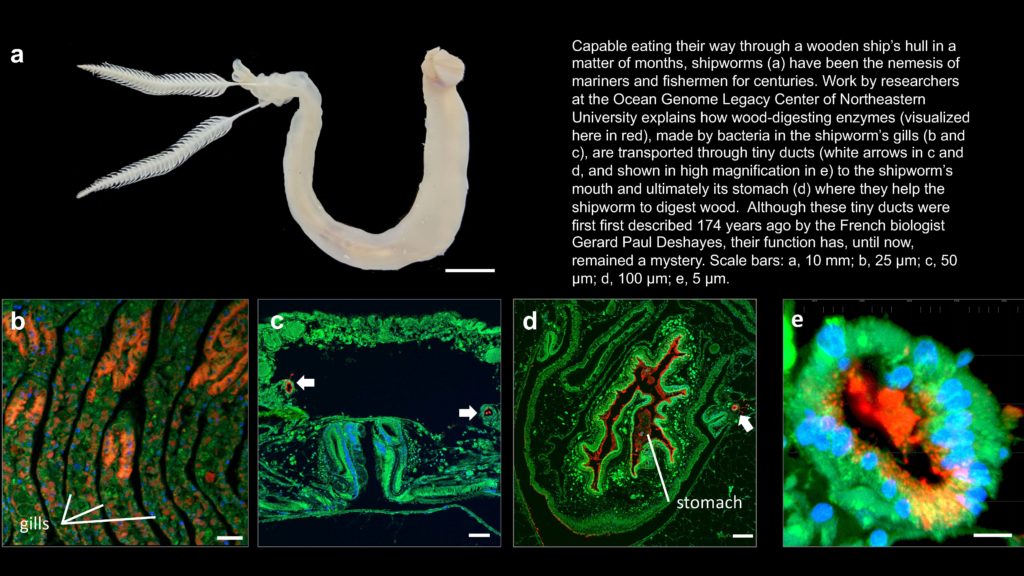Shipworms are wormlike wood-eating clams that have been the nemesis of mariners since the first wooden boat set out to sea—and for good reason. Shipworms can gnaw their way through a wooden hull in a matter of months. Since at least 350 BCE, scientists have pondered the question: How can shipworms eat wood when most other animals can’t?
Termites devour wood with the help of symbiotic bacteria in their gut that make wood-digesting enzymes. But shipworms have no such gut bacteria. Instead, their wood-digesting bacteria live in their gills, far from their mouth and stomach.
So how do the bacterial enzymes get from the shipworm’s gills to its mouth and stomach? In a paper published on November 9, 2022, in the Proceedings of the Royal Society B, the Royal Society’s biological research journal, OGL researchers showed that these enzymes are transported by tiny ducts that travel from the gills to the mouth.

Figure courtesy of Marvin Altamia.
Interestingly, the existence of these ducts themselves was not a new discovery. They were first identified by French biologist Gerard Paul Deshayes in 1848, and later described in greater detail by American biologist Charles P. Sigerfoos in 1907. However, their function remained a mystery. In fact, these ducts were so small and hard to find that some biologists even doubted their very existence. Amazingly, it took nearly 175 years before the function of the tiny elusive ducts was finally explained!
Why do we care? Shipworms are a model system that can help scientists design modern bioethanol plants that convert agricultural and paper waste into renewable fuels. Shipworm bacteria are medical models as well, producing novel antibiotics and helping scientists understand what makes some bacteria pathogenic and others beneficial to their hosts. But equally fascinating is how the keen observations of scientists of previous centuries can re-emerge to help solve modern mysteries.
Read more about this new and old discovery here: https://royalsocietypublishing.org/doi/full/10.1098/rspb.2022.1478.
Want to help OGL solve other mysteries of the sea? Support OGL here.
